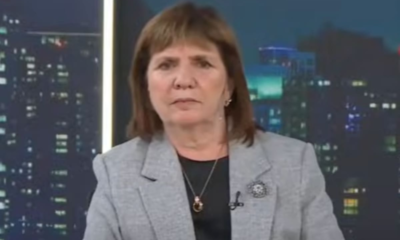INTERNACIONAL
Josh Shapiro barely escapes assassination; why Trump should call him
Political violence is spiraling out of control.
I don’t care which party you identify with. I don’t care if you like or dislike Donald Trump. This has been building for years, and perhaps we’ve become as inured to it as we have with most mass shootings.
The most prominent example, of course, is the two assassination attempts against the president. On the shooting in Butler, Pa. that grazed his ear, Trump would not have survived if he hadn’t been turning his head to point to a chart. The second attempt was foiled by the Secret Service.
More than 60 years after the death of JFK, a would-be assassin’s bullet nearly changed the course of the 2024 election by taking out the man who would go on to win a second term in the White House. The photo of Trump, with a bloodied face, raising his fist became iconic.
PENNSYLVANIA POLICE ARREST SUSPECT AFTER GOVERNOR’S MANSION SET ON FIRE WHILE GOV JOSH SHAPIRO, FAMILY SLEPT
It’s rather embarrassing that the press moved on so quickly after a few days.
Even more cringe-worthy was the way the media provided scant coverage of the man who was determined to kill Brett Kavanaugh in 2022. He had driven from California and was a block away from the Supreme Court justice’s Maryland home – with a Glock pistol, two magazines of ammunition, a knife, pepper spray and zip ties – when he called police and turned himself in.
The would-be murderer just pleaded guilty last week.

Gov. Josh Shapiro, D-Penn., is the latest target of political violence – in this case, an arson attack on his gubernatorial residence. (Getty/Commonwealth Media Services)
This has been going on since President Clinton tried to blame Rush Limbaugh for the Oklahoma City bombing. And since the New York Times blamed Sarah Palin for a crosshairs map never seen by the shooter who killed six people and wounded Gabby Giffords in Arizona. A retrial of her defamation suit is about to get under way.
When a liberal shooter who liked Rachel Maddow opened fire at a Republican baseball practice in Virginia, badly wounding GOP leader Steve Scalise, the finger-pointing began again. Inevitably, each side tries to score political points based on the perceived motive of the shooter.
And that brings me to the attempt to kill Pennsylvania Gov. Josh Shapiro on the first day of Passover. The governor, who is Jewish. His family and friends are lucky to be alive.
JOSH SHAPIRO TELLS MAHER HE’S ‘DAMN PROUD’ OF BEING JEWISH, DODGES WHETHER IT FACTORED INTO VP SNUB IN 2024
It is frightening. It is infuriating. It is the epitome of anti-Semitism. The Harrisburg mansion, where Shapiro, his wife Lori and children live, was set on fire, and the 38-year-old arsonist admitted to police that he set the fires.
Imagine being woken up by state police at 2 a.m., with the smell of smoke in the air, and told that you, your family and friends must immediately evacuate. Who wouldn’t feel vulnerable, no matter their title?
The only reason they survived is that they were sleeping in another part of the mansion, which the arsonist had no way of knowing. The building remains badly damaged.
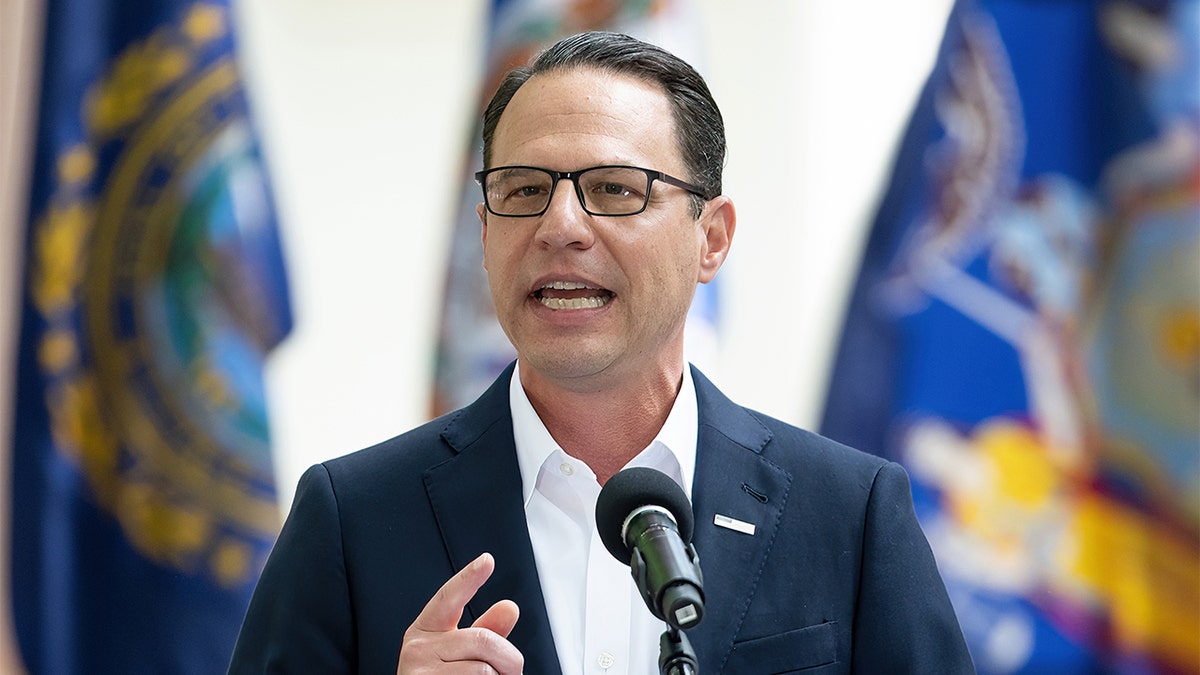
An enraged Shapiro unilaterally condemned violence after the attempt on his life early Sunday. (Gilbert Carrasquillo/GC Images)
Shapiro was clearly and justifiably angry when he said: «This type of violence is not okay. I don’t give a damn if it’s from one particular side or another. It’s not okay.»
The governor pointed out that it was the first night of Passover and members of the local Jewish community had been celebrating with him in the state dining room. «No one will deter me or my family or any Pennsylvanian from celebrating their faith openly or proudly,» he declared.
Ironically, it was Shapiro who led the investigation of the attempted assassination of Trump at Butler, where a man in the crowd was killed.
The president has been posting up a storm at Truth Social, including messages on Easter Week and Passover, but hasn’t said a word about Shapiro.
I think Trump should call Shapiro as a way of demonstrating that he deplores political violence no matter which party is involved. FBI Director Kash Patel did call, but that’s not at the same level.
The Harrisburg man told police he was «harboring hatred» for Shapiro and had he found him, he would have beaten the governor with his hammer.
His mother told the AP he was mentally ill.
PENNSYLVANIA FIRE CHIEF CREDITS CLOSED DOORS FOR SAVING LIVES DURING GOVERNOR’S MANSION ATTACK
At the Free Press, Sen. Dave McCormick, R-Penn., a Republican who supports Trump, said:
«When Governor Josh Shapiro and I spoke on Saturday afternoon about a potential data center investment in Pennsylvania, he ended the call by noting that he needed to go prepare for an 80-person seder which he was leading. Less than 12 hours later, he and his family were evacuated from the governor’s residence, because an arsonist had set it on fire.

Sen. Dave McCormick, R-Penn., thoroughly condemned the attack. (Michael M. Santiago/Getty Images)
«The pictures of the damage to the residence are horrifying. Yet even more frightening is the trend that this attack is a part of. And if left unchecked, this trend — of using political violence to settle our differences — has the potential to destroy our republic.»
SUBSCRIBE TO HOWIE’S MEDIA BUZZMETER PODCAST, A RIFF ON THE DAY’S HOTTEST STORIES
Now, it must be said the security was awful. This guy scales the fence and the state troopers on duty can’t stop him from reaching the mansion? And then let him get away?
CLICK HERE TO GET THE FOX NEWS APP
As for journalists, we should resist the temptation to say, well, Shapiro wasn’t hurt, let’s move on. A Jewish governor was targeted and nearly assassinated. That’s not a one-day story by any stretch of the imagination.
Media Buzz,Pennsylvania,Crime,Governors
INTERNACIONAL
Innovación alimentaria y solidaridad: cómo las primeras civilizaciones afrontaron mil años de variabilidad climática
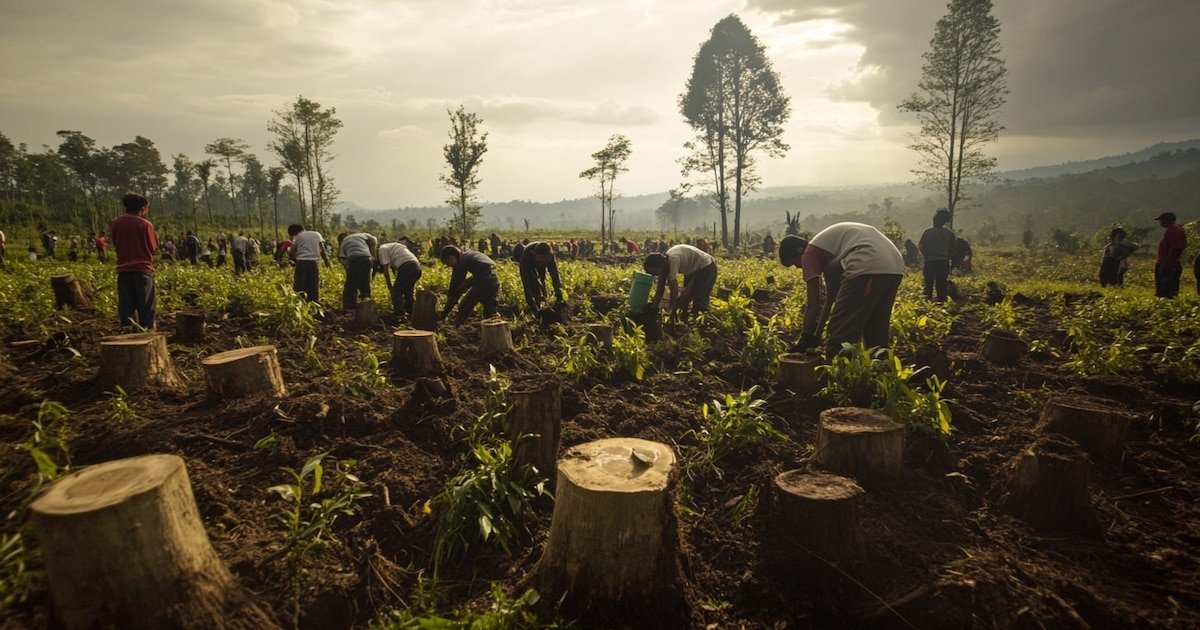
Una investigación multidisciplinaria basada en análisis arqueológicos e isotópicos demostró que las comunidades africanas, establecidas por algunos estudios científicos como cuna de la humanidad, lograron resistir más de 10.000 años de inestabilidad climática a través de prácticas alimentarias diversificadas y lazos comunitarios sólidos.
El trabajo, citado por The Conversation, examinó restos humanos y animales de 187 yacimientos en todo el continente africano, brindando una perspectiva integral sobre la evolución de los sistemas de subsistencia en distintos contextos ecológicos. La clave de esta resiliencia no fue un modelo único de agricultura o ganadería, sino la capacidad de adaptación mediante estrategias complementarias.
El equipo de investigación adoptó un enfoque continental, utilizando datos de isótopos estables presentes en huesos antiguos. Este método permitió reconstruir los patrones dietarios y las estrategias de subsistencia empleadas por distintas sociedades africanas durante el Holoceno.
Los resultados fueron clasificados en “nichos isotópicos”, es decir, categorías que agrupan modos de vida según características ambientales y culturales. Esto permitió observar que el desarrollo alimentario no siguió una línea progresiva única, sino que se construyó como un mosaico de respuestas adaptativas a condiciones cambiantes.
Se trata del primer estudio que rastrea a esta escala la historia alimentaria del continente a través de análisis isotópicos, ofreciendo una nueva mirada sobre cómo se forjaron los sistemas de producción en distintos momentos de la historia.

El trabajo destaca que la supervivencia ante los vaivenes climáticos se sustentó en la combinación de prácticas como el pastoreo, la agricultura, la pesca y la recolección. En lugar de depender de un solo modelo intensivo, las comunidades integraban varias actividades de manera simultánea, ajustándolas a los contextos locales.
Este enfoque multiestratégico se verificó tanto entre distintas regiones como dentro de las propias comunidades. El principio rector era la flexibilidad: modificar las prácticas frente a alteraciones del entorno sin adherirse de forma exclusiva a una sola fuente de subsistencia.
El equipo de científicos subrayó que la resiliencia no dependía del método “más eficiente” en términos productivos, sino de mantener abiertas múltiples posibilidades que pudieran responder a crisis o transformaciones ecológicas.
Los datos permiten observar cómo las comunidades adaptaron sus sistemas alimentarios a lo largo del tiempo y el espacio. En el sur de África, en territorios correspondientes a Botswana y Zimbabue, grupos sociales combinaron el cultivo, la recolección de productos silvestres y la cría de ganado, especialmente tras el fin del llamado Periodo Húmedo Africano, hace unos 5.500 años.

En el valle del Nilo, especialmente en Egipto y Sudán, las poblaciones desarrollaron sistemas mixtos que incluían la agricultura de cereales, la pesca, la producción láctea y la elaboración de bebidas fermentadas. Estas combinaciones respondían a las condiciones locales y a la disponibilidad de recursos.
Los sistemas pastoriles —vinculados al cuidado y movilidad del ganado— fueron particularmente frecuentes y diversos. La variedad de señales químicas en los restos arqueológicos sugiere una alta capacidad de ajuste a entornos contrastantes, desde zonas áridas hasta regiones montañosas.
La investigación concluye que la diversidad productiva no hubiera sido suficiente sin la existencia de vínculos comunitarios sólidos. Durante períodos de estrés, como la transición climática que puso fin al Periodo Húmedo Africano, se intensificaron los intercambios de alimentos, conocimientos y trabajo entre distintos grupos.
Estas formas de cooperación permitieron compartir tierras y recursos, así como transmitir saberes sobre prácticas sostenibles. Por ejemplo, en ciertas regiones, los animales eran criados no como principal fuente alimentaria, sino como respaldo ante la pérdida de cultivos, una estrategia que funcionaba como red de seguridad.

Esta organización colaborativa favoreció la continuidad de los sistemas pastoriles incluso durante los últimos mil años, especialmente en regiones donde la aridez se convirtió en un rasgo dominante del paisaje.
El estudio plantea una crítica directa a las políticas de desarrollo que promueven modelos intensivos y estandarizados. Según los investigadores, esas estrategias no consideran la diversidad ecológica y social que caracteriza muchas regiones del mundo, en especial en el continente africano.
La experiencia histórica documentada en este análisis sugiere que los sistemas alimentarios flexibles, integradores y sostenibles son más eficaces para enfrentar escenarios de cambio climático. Lejos de imponer modelos únicos, las políticas deberían adaptarse a las realidades locales y promover la colaboración intercomunitaria.
El artículo cita que las sociedades africanas históricamente construyeron sus decisiones alimentarias “en sintonía con la tierra y el mar, no en oposición a ellos”. En ese tono, los autores del estudio indicaron que la trayectoria de las comunidades africanas representa un referente útil para enfrentar los desafíos contemporáneos. Frente a un contexto global de incertidumbre climática, las estrategias milenarias de adaptación y cooperación pueden ofrecer una guía para diseñar sistemas más resilientes y sostenibles.
gente,prepara alimentos,programa de apoyo nutricional de zimbabue
INTERNACIONAL
Michelle Obama portraitist’s exhibit with trans Statue of Liberty pulled after pressure from Vance

NEWYou can now listen to Fox News articles!
EXCLUSIVE: Artist Amy Sherald canceled her upcoming exhibit featuring a portrait of a transgender Statue of Liberty at the Smithsonian’s National Portrait Gallery after Vice President JD Vance raised concerns the show included woke and divisive content, Fox News Digital has learned.
President Donald Trump signed an executive order in March that placed Vance in charge of overseeing the removal of programs or exhibits at Smithsonian museums that «degrade shared American values, divide Americans based on race, or promote programs or ideologies inconsistent with Federal law and policy.»
Vance said Sherald’s «American Sublime» exhibit violated Trump’s executive order and was an example of woke and divisive content during a meeting June 9 with the Board of Regents, a source familiar with the meeting told Fox News Digital.
ARTIST PULLS ART FROM SMITHSONIAN GALLERY AFTER MUSEUM TRIES TO ALTER HER TRANS STATUE OF LIBERTY PAINTING
Arewà Basit stands in front of Amy Sherald’s painting, «Trans Forming Liberty» on display at the Whitney Museum of American Art in Manhattan, N.Y., April 2, 2025. (Tiffany Sage/BFA/Shutterstock)
«Vice President Vance has been leading the effort to eliminate woke indoctrination from our beloved Smithsonian museums,» an administration official said in an email to Fox News Digital. «On top of shepherding the One Big Beautiful Bill through the Senate and helping President Trump navigate international crises, the vice president has demonstrated his ability to get President Trump’s priorities across the finish line.»
Sherald, best known for painting former first lady Michelle Obama’s official portrait in 2018, announced Thursday she was pulling her show, «American Sublime,» from the Smithsonian’s National Portrait Gallery slated for September, The New York Times first reported.
Sherald said she was rescinding her work from the exhibition after being told that the National Portrait Gallery had some concerns about featuring the portrait of the transgender Statue of Liberty during the show. The painting, «Trans Forming Liberty,» depicts a trans woman with pink hair wearing a blue gown.
TRUMP WHITE HOUSE CALLS OUT SMITHSONIAN FOR PUSHING ‘ONE-SIDED, DIVISIVE POLITICAL NARRATIVES

Amy Sherald attends the 2023 Tribeca Ball at the New York Academy of Art April 4, 2023, in New York City. (Santiago Felipe/Contributor)
«These concerns led to discussions about removing the work from the exhibition,» Sherald said in a statement, The New York Times first reported Thursday. «While no single person is to blame, it’s clear that institutional fear shaped by a broader climate of political hostility toward trans lives played a role.
«This painting exists to hold space for someone whose humanity has been politicized and disregarded. I cannot in good conscience comply with a culture of censorship, especially when it targets vulnerable communities.
«At a time when transgender people are being legislated against, silenced and endangered across our nation, silence is not an option,» Sherald added. «I stand by my work. I stand by my sitters. I stand by the truth that all people deserve to be seen — not only in life, but in art.»
The Smithsonian did not immediately respond to a request for comment regarding Vance’s involvement in the matter.
DEFUNDING DEI: HERE’S HOW THE TRUMP ADMINISTRATION HAS UNDONE BIDEN’S VERY PRIZED PROGRAMS
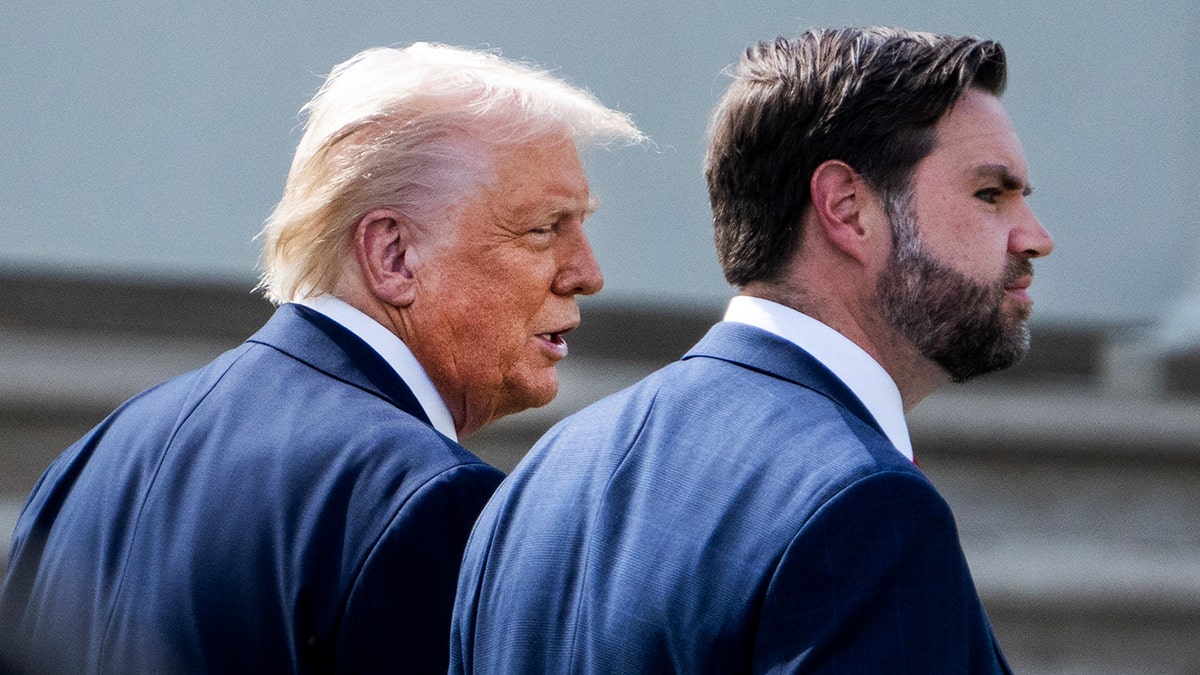
President Donald Trump and Vice President JD Vance after a ceremony with the 2025 national champion Ohio State Buckeyes on the South Lawn of the White House April 14, 2025. (Tom Williams/CQ-Roll Call, Inc via Getty Images)
The White House said the removal of Sherald’s exhibit is a «principled and necessary step» toward cultivating unity at institutions like the Smithsonian.
CLICK HERE TO GET THE FOX NEWS APP
«The ‘Trans Forming Liberty’ painting, which sought to reinterpret one of our nation’s most sacred symbols through a divisive and ideological lens, fundamentally strayed from the mission and spirit of our national museums,» Trump special assistant Lindsey Halligan said in a statement to Fox News Digital.
«The Statue of Liberty is not an abstract canvas for political expression. It is a revered and solemn symbol of freedom, inspiration and national unity that defines the American spirit.»
Other members of the Smithsonian’s Board of Regents include the Chief Justice of the United States, John Roberts, along with senators John Boozman, R-Ark.; Catherine Cortez Masto, D-Nev.; and Gary Peters, D-Mich., along with several other House members.
Fox News’ Gabriel Hays contributed to this report.
INTERNACIONAL
Hambre, muerte y desesperación en Gaza: ¿Por qué no llega la ayuda humanitaria que tanto se necesita?
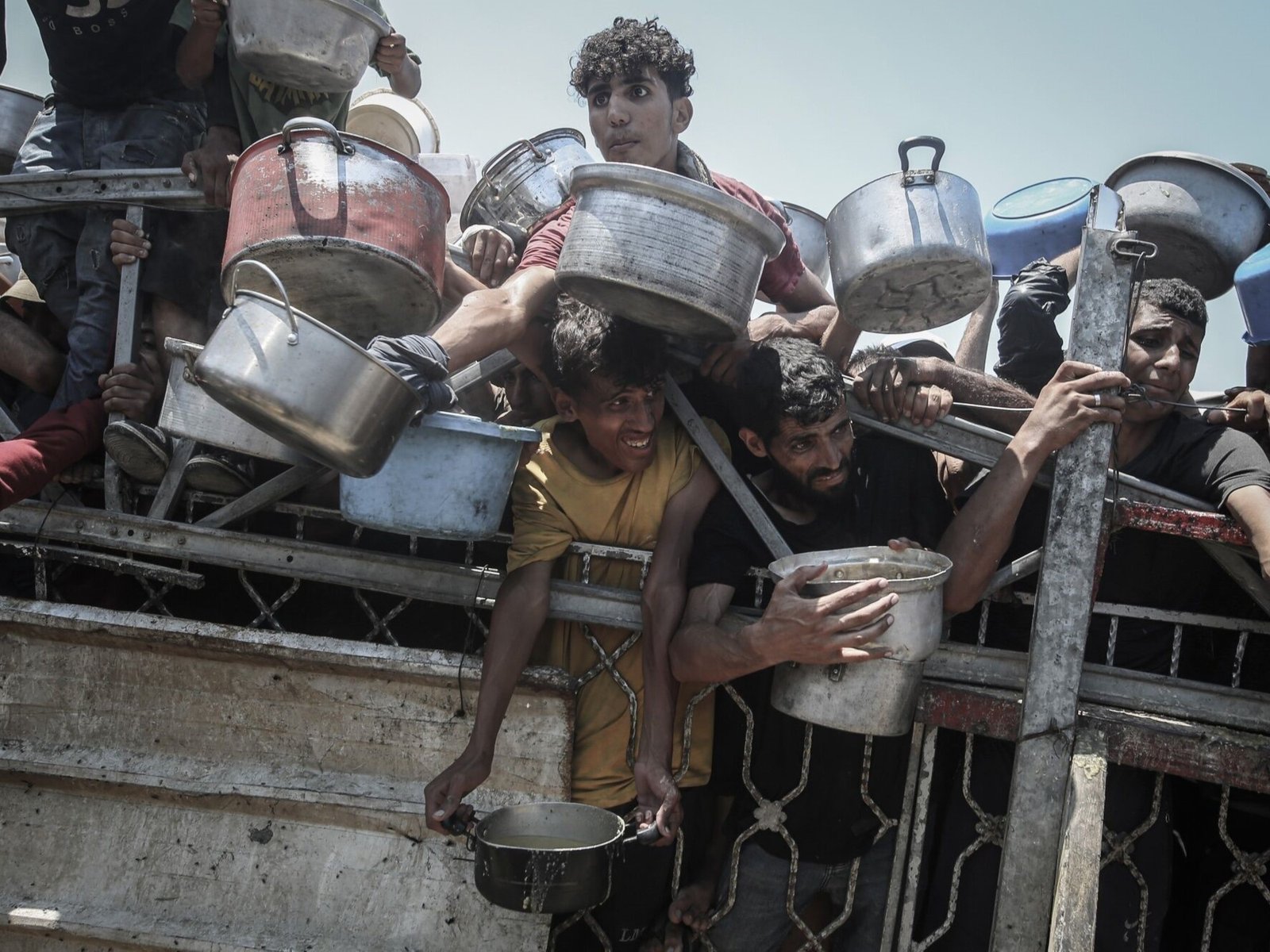
Ataques en centros de entrega de alimentos
Toneladas de ayuda bloqueada
Qué dice Israel

 POLITICA2 días ago
POLITICA2 días agoMáximo Kirchner declaró una fortuna de 8.300 millones de pesos: representa un 76% más que el año anterior

 POLITICA1 día ago
POLITICA1 día agoLa justicia de Santa Cruz desafío a la Corte Suprema e incluyó a Cristina Kirchner en el padrón electoral

 POLITICA2 días ago
POLITICA2 días agoQué dijo Javier Milei en la Derecha Fest: las frases más impactantes

















